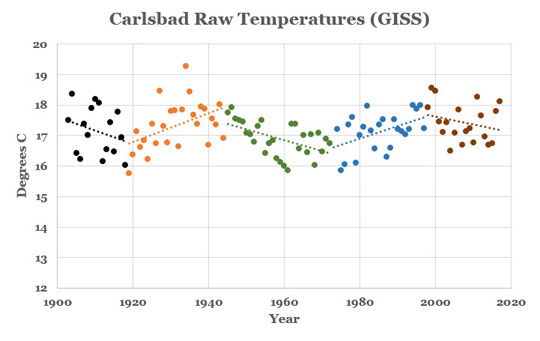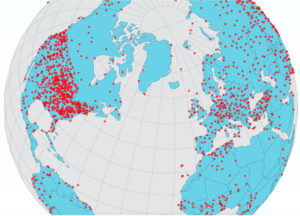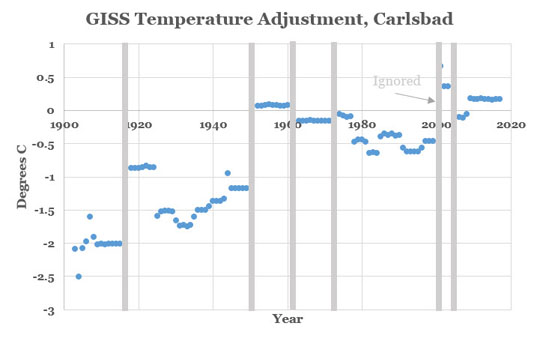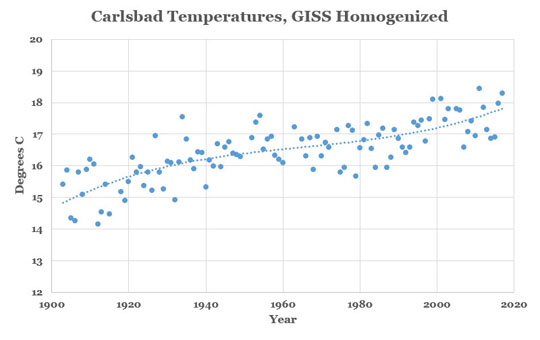One aspect of the science of global warming is the measurement of ground temperature on a local basis. Stations for this purpose have been set worldwide on an irregular basis. Previously, two stations at some distance from each other were reported (Falls Village, Connecticut and Prince Albert, Saskatchewan, Canada). To make the coverage is more complete, let’s analyze a station further south in Carlsbad, Texas on the high plains. As global temperatures increase, the northern most sites should warm more quickly than sites nearer the equator, so the Carlsbad temperatures should vary less than the previous sites. This provides a reasonable measure of actual warming, as well as a test of the effect of latitude within the temperate region because of atmospheric motion.
What follows is a look at the data record as given on the site for NASA Goddard Institute of Space Studies (GISS) for the station at Carlsbad, Texas. Carlsbad sits in the high plains, about 2000 feet, in a relatively rural area with a population of about 700 people, but is also just 15 miles north of a medium size city. The station has been in operation since 1903. 
The plot of the measured temperatures for 115 years in Carlsbad is shown. Although there is routinely a great deal of variation from year to year, several trends can be separated from the plot. A small decrease can be seen from 1903 to about 1918. Then a small, but noticeable increase occurs from 1918 through about 1944. Then, the temperature decreases until 1972. Then, the temperature increases again until roughly 1998 when it decrease until the present but with a lot of volatility.
The process of the measurement is detailed in the previous posts.
Putting this measurement of temperature in perspective, the absolute temperature at Carlsbad has not changed appreciably in over 100 years.
However, sometime in the last few years, just before the Paris Conference on Climate Change, GISS decided to modify the temperature data to account for perceived faults in its representation of atmospheric temperature. Or, more accurately, the Global Historical Climatology Network (GHCN) from NOAA decided to “homogenize” the raw temperature data. And the changes are shown and used by GISS. Those changes for the Carlsbad station are shown.
The early temperatures were decreased to take out the all the raw measurements before 1915 with large adjustments. The peaking in the 1930-40s was also removed. And the current temperatures were increased. The net result is a distinct increase from the beginning of the record until now. Curiously, this fits the current climate change narrative better than the raw data.



